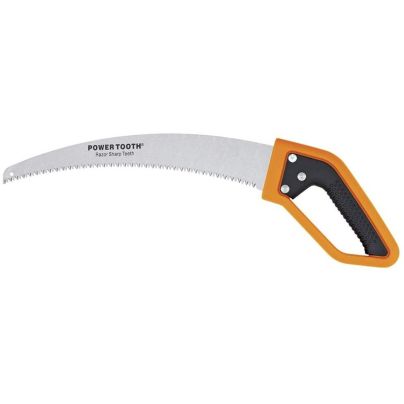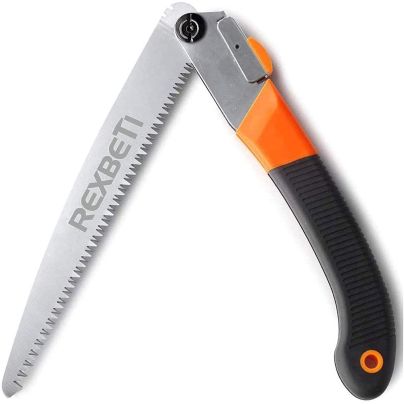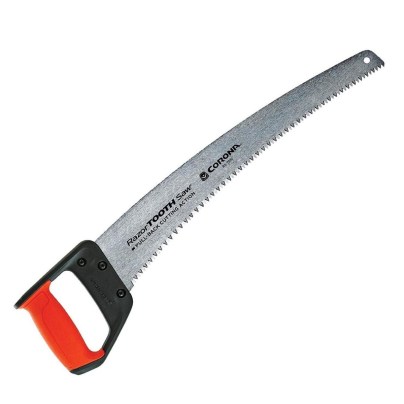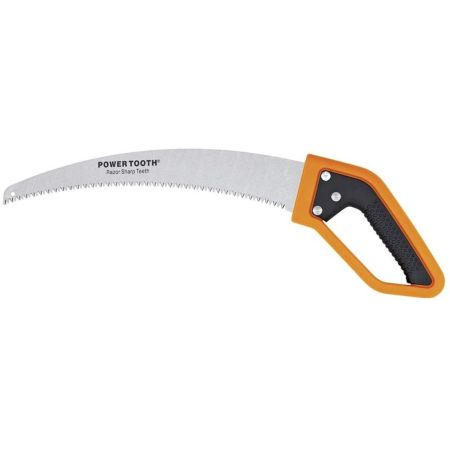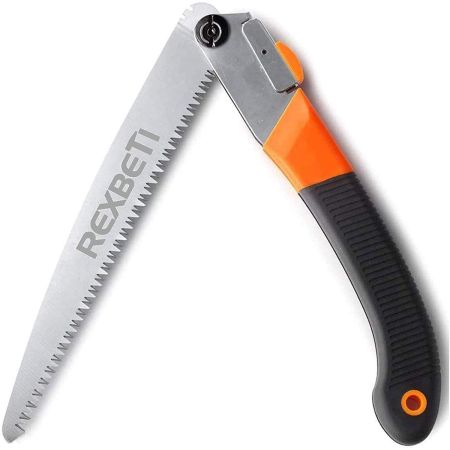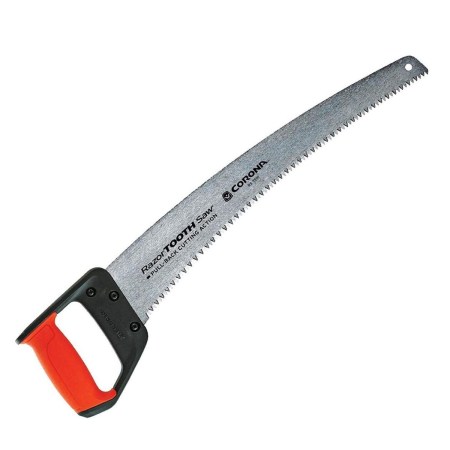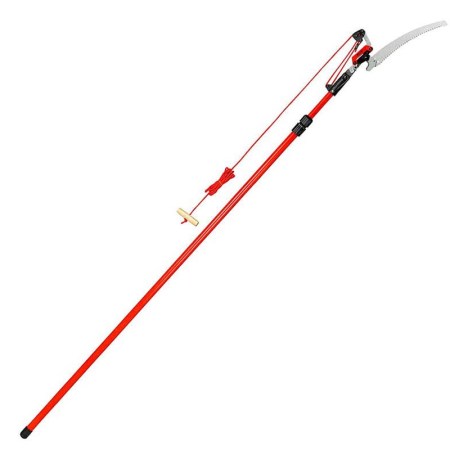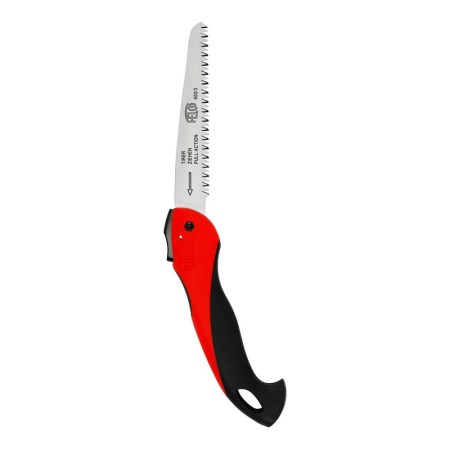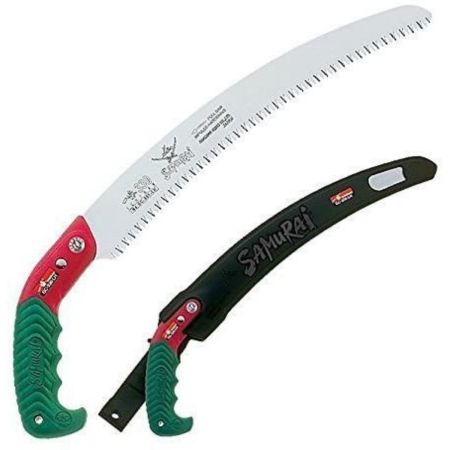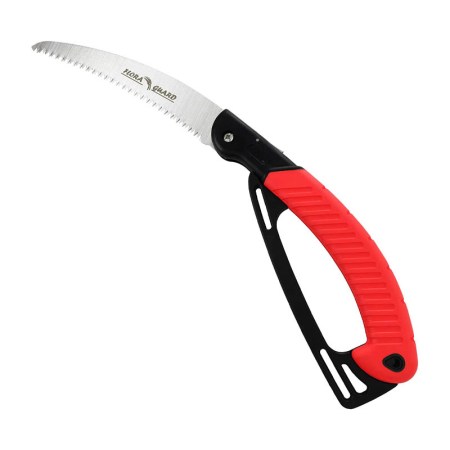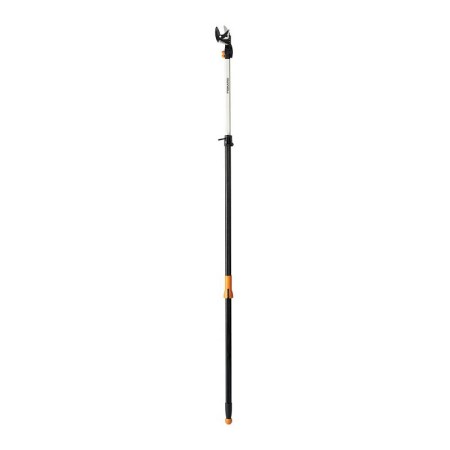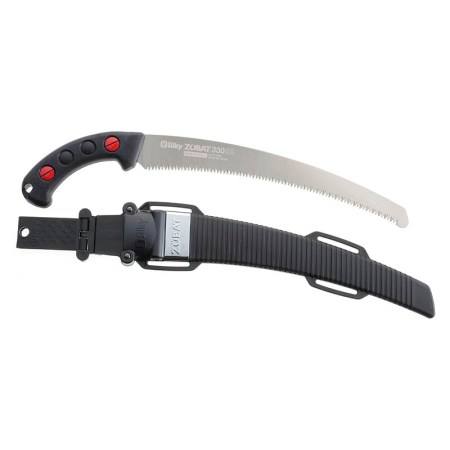We may earn revenue from the products available on this page and participate in affiliate programs. Learn More ›
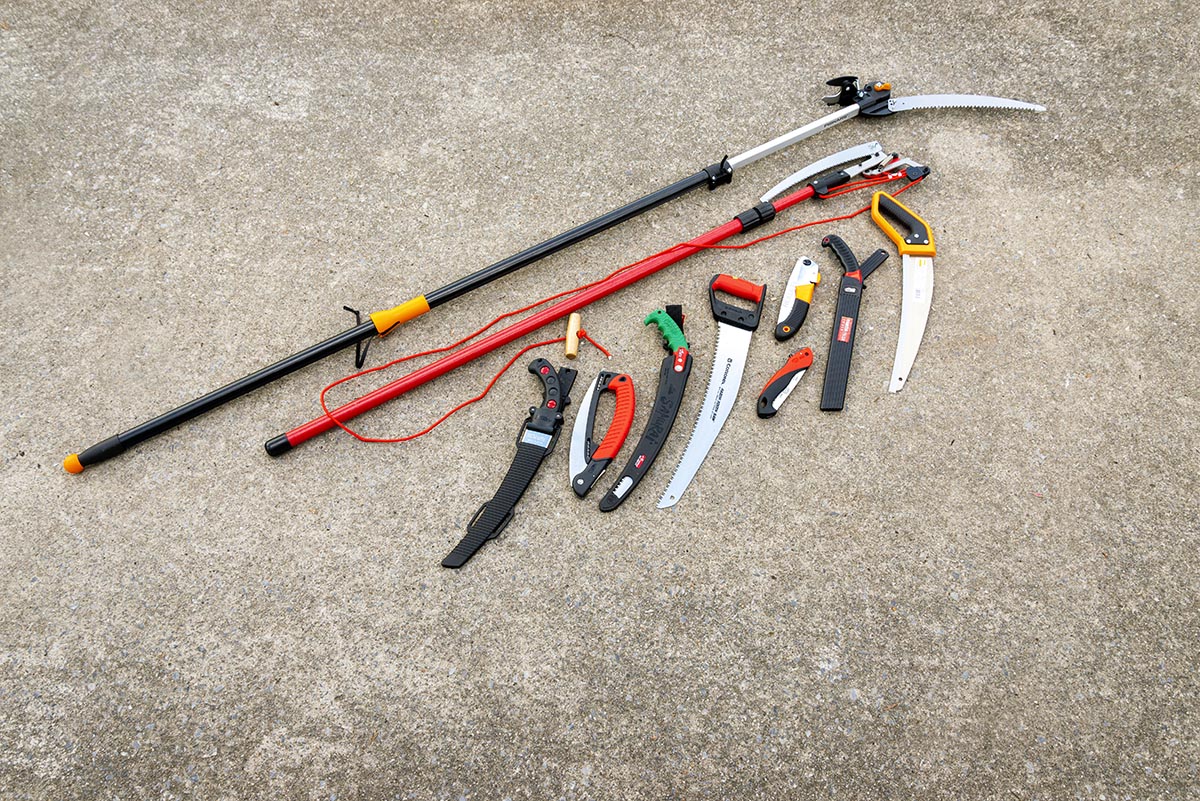
Trees and shrubs can boost curb appeal—but not if they’re overgrown or blocking windows. Keeping a landscape tidy requires more than one tool, but among the best for trimming small branches and shrubs is the trusty pruning saw.
Pruning saws are well suited to cutting branches that are too thick for pruning shears or loppers to handle, and they’re ideal when working overhead because they require just one hand to operate. What constitutes the best pruning saw will depend on the user and the type of trimming tasks undertaken, so to help consumers make the right choice, we tested a host of popular models, judging them by our stringent standards. Ahead, learn what to look for when shopping for a pruning saw, then read our individual reviews for performance details on this lineup of top models.
- BEST OVERALL: Fiskars PowerTooth Soft Grip D-Handle Saw
- BEST BANG FOR THE BUCK: Rexbeti 8-Inch Folding Saw
- BEST SAW GRIP: Corona RazorTooth Saw – 18 Inch
- BEST POLE MOUNT: Corona DualLink Tree Saw and Pruner – 10ft
- BEST FOLDING: Felco 600 Pruning Saw
- BEST WITH SCABBARD: Kanzawa Samurai Ichiban 13″ Curved Pruning Saw
- BEST ON-THE-GO: Flora Guard Folding Hand Saw
- BEST EXTENSION: Fiskars Pruning Stik Extendable Tree Pruner
- BEST FOR LANDSCAPERS: Silky Zubat Professional 330 Hand Saw
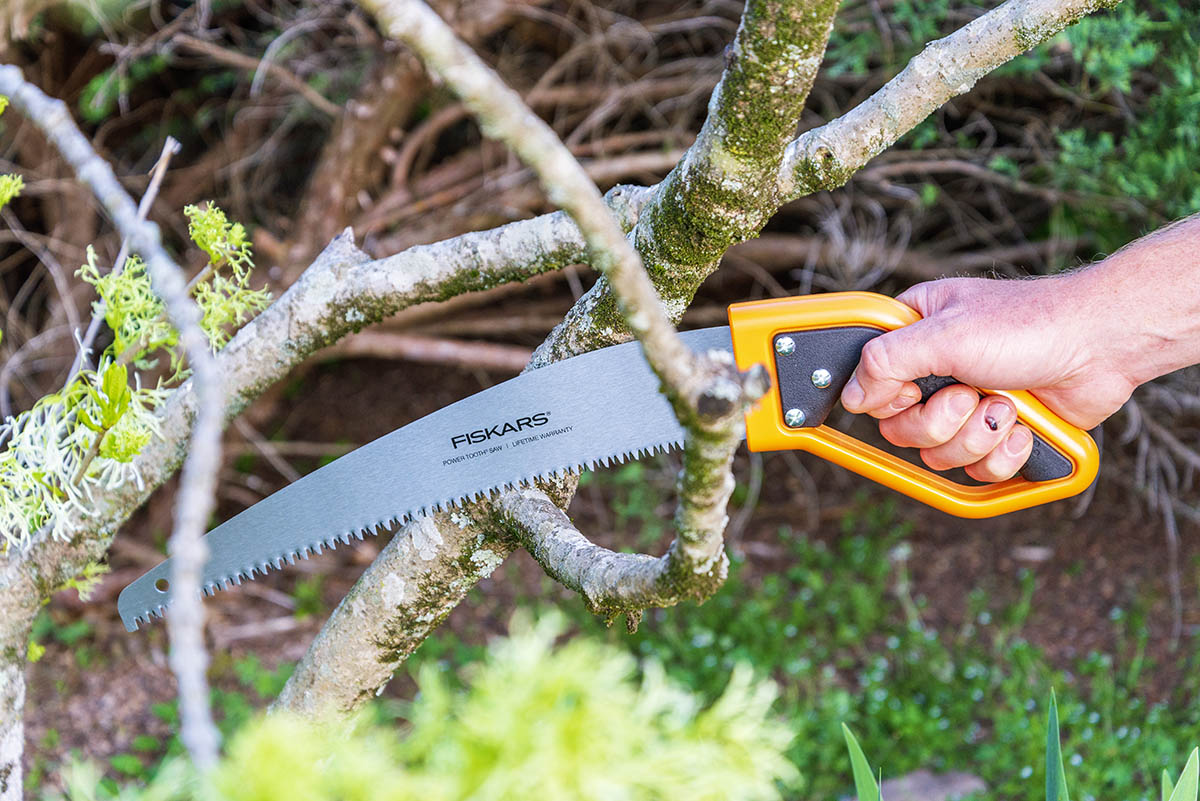
What to Consider When Choosing the Best Pruning Saw
Trimming trees and shrubs does more than just make them look attractive—removing dead or diseased branches is key to keeping them healthy. In addition, some shrubs and trees have such a dense growth pattern that removing some branches will improve air circulation for better growth. Pruning saws come in a handful of types to give trees and shrubs the grooming they need. Some are designed to trim thick branches, while others are more suitable for narrower stems. A few factors are worth considering when choosing one to keep your greenery looking great.
Types
While pruning saws all have the same purpose—to allow the user to quickly and efficiently sever a branch—differences in design make some types better than others for specific trimming chores.
- Hand saws: Also called non-folding saws, these tools are what most envision when thinking of a pruning saw. A hand pruning saw features a non-folding blade that can be straight or slightly curved and comes in various lengths.
- Folding: Handy for keeping in a tool box or tool pouch without worrying about grabbing a sharp blade, folding pruning saws lock into a straight position for work and then fold for safe storage.
- Pole: For reaching upper limbs, a pole pruning saw is just the ticket. It allows the user to extend the blade either by expanding a telescoping pole or by attaching an independent utility pole to the saw.
- Powered: Whether powered by rechargeable batteries or a corded electric model, these pruning saws make trimming a breeze. The only physical labor required is to position the saw and then gather up the branches once they fall.
Blade
When it comes to pruning saws, the saw blade is the star of the show. Specific materials and blade configurations will determine the quality and best usage.
- Length: Blade length on pruning saws ranges between 3 inches and 15 inches, with 6 inches and 9 inches being the most common.
- Curved or straight: A pruning saw with a straight blade is well suited to making cuts in the vicinity of the user’s torso or waist because that’s where the user can generate the most power. Curved blades are better suited to making overhead or low cuts because the curved blade helps hold the saw in place.
- Material: Most pruning saw blades are made from steel and high-carbon steel. In general, the more carbon in the steel, the harder the blade will be. High-carbon steel is prone to rusting over time, however, so the blade should be coated or plated to protect it. Impulse-hardened steel is among the most robust processes for making saw blades, and it results in saw teeth that remain sharper longer.
Teeth
The tooth configuration on a pruning saw blade will determine whether it cuts with a pulling action or with a pushing action—or both. If the teeth slope forward, the blade cuts on the pull stroke; if they slope backward, it cuts on the push stroke. If the teeth extend straight out, the blade will cut on either the push or pull stroke.
The number of teeth is also a performance factor. Some pruning saws are labeled by the number of teeth per inch (TPI), and most pruning saws have between 3 and 24 TPI. The lower the TPI, the quicker and more aggressive the blade will cut, but it can leave rough ends on the branch. The higher the TPI, the longer it takes to cut, but the smoother the cut branch will be.
Handle
How long the user can prune branches without suffering from hand fatigue depends significantly on the saw’s handle. A high-quality ergonomic grip is designed to fit the shape of the hand to reduce fatigue and soreness. A nonslip grip is also desirable for comfort and safety.
Pruning saw handles often feature pistol grips, whereby the user’s hand wraps over the handle with the fingers beneath. This is suitable for most pruning tasks, but a traditional saw grip allows the user to use push or pull force for bigger cutting tasks.
Weight
The best weight for a pruning saw will depend on the user. Saw weight varies from a few ounces up to about 3 pounds or more. The heavier a saw is, the more stable it will be, but the more quickly it will lead to hand and arm fatigue, especially if used overhead. Lightweight pruning saws are easier to maneuver, but the user may need to exert more downward pressure when sawing to cut through a branch.
Safety Features
All saw blades are sharp and present a risk of injury, especially powered models. Non-powered pruning saws are safer, but grabbing a sharp blade when digging for a tool in a tool box can still be a painful experience. For that reason, some pruning saw manufacturers include a locking mechanism on folding saws to keep the blade safely tucked away until it’s ready to use. Other pruning saws may come with a scabbard or a sheath that allows the user to store the pruning saw safely in its case—often on a belt loop—for quick retrieval.
Tips for Using a Pruning Saw
A good-quality pruning saw enables clean cuts for shaping trees and shrubs, but a few tips can make the project quicker, safer, and simpler. Before getting started, be sure to wear the correct gear: work gloves, a long-sleeved shirt, long pants, and protective eyewear.
- Put gravity to work for you and cut from the top of a branch downward.
- To keep a heavy branch from experiencing a jagged tear at the bottom when completing the cut, saw a notch on the bottom of the branch with the pruning saw. Then, when the pruning saw nears the notch, the branch will break away in the notch rather than pulling and tearing off a ragged section of bark.
- Cut with quick, brisk strokes to keep the blade from becoming lodged in the cut.
Our Top Picks
To qualify as a top pick, a pruning saw needs to be durable and well made and come with a sharp, high-quality blade. Check out these product reviews to learn more about how each tool performed in our tests and find out which might be the best pruning saw for you.a
Best Overall
Fiskars Power Tooth Soft Grip D-Handle Saw
See ItWith a 15-inch curved blade made from precision-ground steel, the Fiskars PowerTooth pruning saw offers impressive durability and strength. The gently curved blade is well suited to trimming away branches both overhead and in low areas. Its straight teeth can cut on either the push or pull stroke, and the trademarked Power Tooth blade is great for sharp, clean cuts.
A nonslip ergonomic handle and light weight of less than a pound reduce hand and arm fatigue, and a pistol grip allows for added control. With the attached handle, the entire saw measures 21.62 inches long.
In our tests, the Fiskars 15-inch pruning saw was sharp and fast, thanks to its two-way cutting action. The blade offered adequate flexibility with good rigidity to resist buckling on the push stroke. While fairly lightweight and maneuverable, it did not fit well into smaller-branch crotch areas, so we recommend using it in combination with a pair of loppers for removing any smaller branches. A good saw for maintaining established trees and shrubs, it would also come in handy when camping. Be sure to buy a scabbard (sold separately) to store the saw safely.
Product Specs
- Blade length: 15 inches
- Teeth per inch: 6
- Weight: 12 ounces
Pros
- Fast two-way cutting action
- Comfortable nonslip grip
- Handle engineered for both undercutting and top cutting
- Chrome-plated steel blade
Cons
- Scabbard not included
- Too large for tight spaces and 1- to 2-inch branches
Get the Fiskars 15-inch pruning saw on Amazon and Walmart.
Best Bang for the Buck
Rexbeti 8-Inch Folding Saw
See ItWeekend landscapers need not spend a fortune for a good-quality pruning saw to get unruly shrubs in shape. The affordable Rexbeti Folding Saw has a straight 8-inch blade with wide-set 7-TPI teeth to make quick work of trimming away unwanted branches. The Rexbeti saw blade is made from durable SK-5 steel for long-lasting sharpness and durability.
This pruning saw cuts on either a pull or push stroke, and it features a nonslip, rubbery grip for comfort. When not in use, the saw blade folds away in the handle, making it easy to carry in a backpack or on a tool belt.
Out of the box, this Rexbeti folding saw failed to make a positive first impression. Frankly, it looked cheap, and the one we tested even had a small amount of play in the blade pivot. But in action, it performed quite well. The somewhat stiff blade made smooth, quick cuts on branches up to 4 inches thick, including some in narrow crotches. The locking mechanism operated easily one-handed. Even the grip was more comfortable than it appeared initially. While we’re not confident that this saw will last many seasons of tough use, at this price, it’s a solid value purchase with good upside potential.
Product Specs
- Blade length: 8.5 inches
- Teeth per inch: 6
- Weight: 11.7 ounces
Pros
- Bargain price
- Capable cutter for branches 1 to 4 inches thick
- Nonslip handle and secure blade lock for safety
Cons
- Cheap appearance
- Some play in blade pivot on tested model
Get the Rexbeti pruning saw on Amazon and Walmart.
Best Saw Grip
Corona RazorTooth Saw – 18 Inch
See ItDesigned to cut more substantial branches—up to 10 inches in diameter—the Corona RazorTooth is a powerful tool. The ergonomic grip is reminiscent of saws used to hand-cut lumber, and it puts the user’s wrist in a straight position while sawing, which maximizes the sawing motion.
An ample 18-inch blade can handle heavy-duty jobs, and it’s made from SK-5 impulse-hardened steel to resist dulling. A chrome coating adds further rust resistance and performance. From handle to blade tip, the saw measures a total of 23.25 inches, making this pruning saw well suited to the hobby orchardist or frequent tree trimmer.
In testing, the Corona RazorTooth pruning saw lived up to its promises. We loved how it cruised through big cuts up to 10 inches thick, moving fast and smoothly without flexing or binding midstroke. The handle construction was comfortable for making undercuts as well. At just 5 TPI, it pleasantly surprised us with its cutting power (though we still question how its longevity will compare with saws that have 6 or 7 TPI). The only real complaint is that it does not come with a scabbard, an absolute necessity with a blade of this size and aggressiveness.
Product Specs
- Blade length: 18 inches
- Teeth per inch: 5
- Weight: 1.1 pound
Pros
- Big, fast cuts
- Comfortable ergonomic handle
- Strong, fairly stiff blade
Cons
- Longevity could be compromised by the low tooth count
- A scabbard is not included
Get the Corona RazorTooth pruning saw on Amazon, The Home Depot, and Tractor Supply Co.
Best Pole Mount
Corona DualLink Tree Saw and Pruner – 10ft
See ItFor a greater reach, the Corona DualLink Tree Saw and Pruner is built with an adjustable two-section fiberglass pole that reaches up to 10 feet high. The pole’s secure twist-lock mechanism lets the user customize the pole length for the job at hand. The removable 13-inch triple-ground saw blade quickly cuts through branches up to 8 inches thick. A dual-link, rope-operated pulley system delivers extra cutting power to the 1-inch pruning shear for easier, cleaner cutting action.
Truly effective and remarkably affordable, Corona’s pole saw proved to work as advertised. In testing we found that it had good reach but wasn’t unwieldy, and the extension pole was fairly secure despite some minor slippage early on. The removable saw blade is very sharp and fixed at an all-purpose angle that works for most circumstances. The dual-link power assist for the pruning shear works well, but we foresaw that it might get in the way where branch density is thick. Overall, we consider this an excellent tool for the price.
Product Specs
- Blade length: 13 inches
- Teeth per inch: 6
- Weight: 5.3 pounds
Pros
- Dual link shear cleanly cuts branches up to 1 inch
- Saw blade cuts branches 1 to 8 inches
- 10-foot reach
Cons
- Shear rope gets in the way while sawing
- No angle adjustment for the saw blade
Get the Corona tree saw and pruner on Amazon, The Home Depot, and Tractor Supply Co.
Best Folding
Felco 600 Pruning Saw
See ItFelco is world renowned for pruners, especially the legendary model F-2 that enjoys enduring loyalty among nursery and landscape pros. So it’s no surprise that the company offers a complementary tool for slightly thicker branches. With its 6-inch blade, the Felco Felco 600 folding pruning saw is the smallest in our lineup, and it comfortably fits in a back pocket or belt scabbard (sold separately). This portable pruning saw makes for fast, easy removal of branches from ¾ inch to about 3 inches in diameter. Though small, it boasts high-quality features such as a high-quality chrome-plated hardened-steel blade that tapers away from the teeth. It offers excellent resistance to sap buildup, rust, and binding. The rubberized handle makes a comfortable, anti-slip grip.
For routine yard maintenance or minor trail clearing while backpacking, the Felco 600 can get the job done. Our overall impression was of rugged durability and high quality—just what we expected from a brand known for its professional tools. It made smooth, aggressive cuts in dried-out dead hardwood as well as in sappy young pine without getting clogged teeth. The size was perfect for pocket carrying while walking around. The grip felt good, and the thumb lock was smooth, secure, and easy to use. Another plus: The bright red handle was easy to find when we almost lost it in a wooded area.
Product Specs
- Blade length: 6 inches
- Teeth per inch: 7
- Weight: 5.5 ounce
Pros
- Compact size ideal for pocket carrying
- Tapered, chrome-plated steel blade with aggressive tooth design
- Comfortable rubberized handle with secure thumb lock
Cons
- Only cuts branches up to about 3 inches thick
Get the Felco folding saw on Gemplers.
Best with Scabbard
Kanzawa Samurai Ichiban 13u0022 Curved Pruning Saw
See ItThis chrome-plated, rust-resistant pruning saw from Kanzawa comes with a protective scabbard to keep the blade in good shape and protect users from injuries. The scabbard also includes a belt loop so users can carry the saw while keeping their hands free for other tasks.
A curved, impulse-hardened steel blade makes overhead cutting easier, while a padded, nonslip ergonomic handle is designed to reduce hand fatigue. This saw cuts on the pull stroke, and it creates the smooth, precise end cuts that are desirable on living trees. From the tip of the blade to the end of the handle, the Samurai Ichiban pruning saw measures 20.5 inches.
We appreciated the excellent material quality of the Samurai Ichiban pruning saw. The lightweight, flexible blade is tapered so that the teeth are wider than the spine, which gives it smooth movement in deep cuts. The teeth didn’t clog, nor did sap build up on the sides of the blade. We also found the grip notably comfortable. On a few occasions the blade flexed on the push (non-cutting) stroke. This disrupted the sawing rhythm, which is something that didn’t happen on other saws we tested. That small issue aside, we found the saw’s high-quality materials along with its smooth, comfortable operation made it a smart pick for consistent use over many seasons.
Product Specs
- Blade length: 13 inches
- Teeth per inch: 6
- Weight: 12 ounces
Pros
- Scabbard included
- Ergonomic, nonslip grip
- Tapered, chrome-plated steel blade with hardened teeth
- Smooth, fast cuts without binding or clogging
Cons
- Premium price point
- Blade sometimes flexes on push stroke
Get the Kanzawa Samurai Ichiban pruning saw on Amazon and Walmart.
Best on-the-Go
Flora Guard Folding Hand Saw
See ItAlthough it’s just 7.7 inches long, the anti-rust, low-friction steel blade on this folding pruning saw is designed to cut through branches up to 4 inches in diameter. The Flora Guard cuts on both the push stroke and the pull stroke, making it well suited for quickly trimming away smaller branches.
A padded, nonslip ergonomic handle makes it easy to grasp the saw firmly, while a secure locking button keeps the blade from unfolding when stored. The button also serves to lock the blade at various angles for cutting in tight spots. The end of the handle comes with an eyelet that can be used with a clip to hold the saw on a belt loop.
For a budget-priced saw, this Flora Guard folding saw performed relatively well in our tests. Although the blade was subject to occasional binding and some sap buildup, these only caused minor inconvenience. The saw felt good in the hand, and the cuts were mostly clean and quick. We didn’t love the knuckle guard, but it does provide some protection from branches and prevents the saw from accidentally closing across the back of the fingers. This would make a convenient backup saw to keep in the tool box for occasional or impromptu work.
Product Specs
- Blade length: 7.7 inches
- Teeth per inch: 6
- Weight: 16 ounce
Pros
- Value priced
- Cuts branches 1 to 4 inches in diameter
- Folds for storage
Cons
- Heavy for the size
- Stiff blade is subject to binding and clogging
Get the Flora Guard folding saw on Amazon.
Best Extension
Fiskars Pruning Stik Extendable Tree Pruner
See ItThose who have used a manual pole pruner are familiar with the string-operated shear for removing thin branches. Unfortunately, the string can become an obstacle when it’s time to use the pruning saw. Fiskars solved this problem in its Stik Pruner. This extendable model features a lightweight, adjustable-length aluminum pole with a nylon web strap that operates the shear built into the pole structure.
A sliding handle on the pole’s base section controls the rugged chain-driven shear, and the shear itself rotates nearly 180 degrees at the tip of the pole. The removable 13-inch saw blade mounts to the pole by means of its own independent bracket. Without the saw blade attached, the shear has an easy reach into congested, branchy tree canopies. For larger branches, it takes less than a minute to attach the saw and adjust it to one of four cutting angles.
We enjoyed testing the unique design features on this pole pruner. The lack of an external string and levers to control the shear made it incredibly articulate and manageable in hard-to-reach areas. The saw blade itself made nice clean cuts with a moderate to high level of aggression and zero binding. We were also impressed by the security of the adjustment lock. Once locked in a position, it stayed put through every cut and angle. Undercuts were awkward, as is the case with most pole pruners. Overall, the tool was easy to use, reliable, and made high-reach pruning easier than with conventional pole pruners.
Product Specs
- Blade length: 13 inches
- Teeth per inch: 3
- Weight: 4.29 pounds
Pros
- Lightweight pole pruner
- Use to saw or shear
- No strings attached!
- 12-foot reach
Cons
- Detachable saw something of an afterthought
Get the Fiskars tree pruner on Amazon, Walmart, and Forestry Suppliers.
Best for Landscapers
Silky Zubat Professional 330 Hand Saw
See ItRegardless of whether it’s for a landscape crew or for the gardener who’s in the market for a tough, sharp saw built for all-day use, the Silky Zubat is a great choice. This lightweight saw weighs just over 10 ounces, and it features a rubber pistol-style grip that feels good in the hand. Its fast-cutting, 13-inch curved blade has hardened teeth and a tapered spine, plus a rugged plastic scabbard with dual rollers, and a detachable belt loop is included. When the blade eventually wears out, it is easy to replace by removing two screws in the handle.
In our tests, the Silky Zubat operated as advertised. The handle was super comfortable and attached to the blade at just the right angle for efficient cutting. The narrow blade cut both dry hardwood and sappy softwood extremely well without binding or clogging and was curved just enough to dig into the cut quickly while allowing for long, smooth strokes. We also liked that the saw “clicks” into place when fully seated into the scabbard. We would have awarded this one Best Overall if not for the much higher price point.
Product Specs
- Blade length: 13 inches
- Teeth per inch: 6
- Weight: 10.5 ounces
Pros
- Replaceable high-grade steel blade
- Hard-plastic scabbard with dual rollers and removable belt clip
- Ergonomic rubber pistol-style grip
Cons
- Premium price
Get the Silky Zubat hand saw on Amazon, The Home Depot, and Gemplers.
Our Verdict
Let’s face it, most home gardeners prune a few branches occasionally and probably don’t want to pay top dollar for a highly specialized tool. For a great all-around saw at a fair price, it is hard to beat the Fiskars 15 Inch pruning saw. It’s rock solid for pruning purposes and also totally capable for general yard maintenance, even for cutting campfire wood.
Those who are planting an orchard or going into the landscaping business may want a top-quality premium tool like the Silky Zubat. Though pricey, it is lightweight, strong, aggressive, and an absolute pleasure to work with.
How We Tested the Best Pruning Saws
The pruning saws we tested fell into three categories: fixed blade hand saws, folding blade hand saws, and pole pruners. To make our list, each one had to perform to a minimum standard for its type in terms of user comfort and cutting ability. While each category requires the same basic function of cutting branches, the context and peripheral details vary. So we did our best to factor those unique details into the tests.
The first thing we noted was the general appearance and material quality of each pruning saw. Plain high-carbon stainless steel has a different look and feel than more durable chrome-plated steel. Cushioned rubber handles are more comfortable and slip resistant than plastic. On the bargain-priced end of the spectrum, blade movement and locking mechanisms sometimes feel cheap but not always. Tapered blades are often more flexible and lightweight than flat blades.
Next, we oriented ourselves to any adjustments and special features. We opened and closed the folding saws, extended and retracted the pole saws and adjusted blade angles where possible, and inserted saws into scabbards and pulled them back out. We noted how well the adjustments and features worked, and whether they added functionality or convenience, or just seemed gimmicky.
Finally, we used each saw to cut through a variety of sizes and types of wood. Our primary focus was on green wood since most pruning cuts are to remove living branches, but we also wanted to gauge the blade’s ability to cut hardened dead wood. We noted the largest possible and smallest practical cuts that each saw could make, how smoothly they moved through the wood, whether the teeth became clogged with sawdust or the sides were gummed up with sap. For pole saws, we cut branches at the lowest and highest settings.
FAQs
At some point, most trees and shrubs need a little pruning to keep them healthy and looking good. For those who may be familiar with pruning shears or loppers but are ready to move up to a more aggressive cutting tool, some questions about pruning saws are to be expected. Answers to some of the most common appear below.
Q. What size pruning saw do I need?
As a general rule, choose a pruning saw with a blade that’s double the diameter of the branches you’ll be cutting. For example, choose a saw with at least a 10-inch blade to cut branches up to 5 inches in diameter.
Q. Why are some pruning saws curved?
The curved design makes it easier to saw through low branches as well as those that are overhead.
Q. How do I sharpen a pruning saw?
A lot of today’s pruning saws cannot be sharpened. This is because they’re made from carbon steel and plated to reduce rusting. Sharpening would remove the plating.
Q. How do I clean a pruning saw?
Wipe the blade down to remove any sap or residue after use and then dry the blade. Optional: Apply a thin layer of mineral oil to the saw blade to protect it before storing it over the winter.
